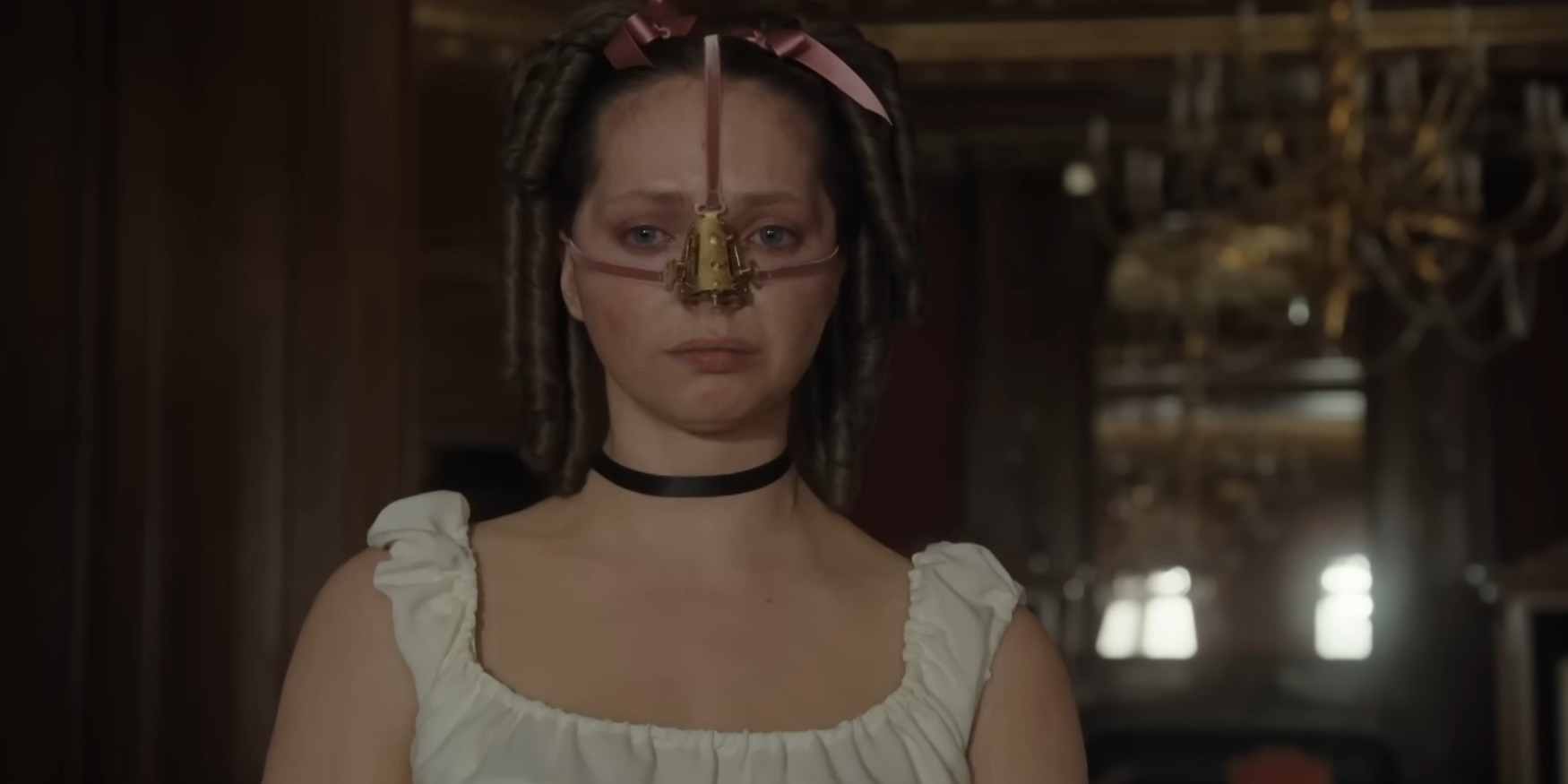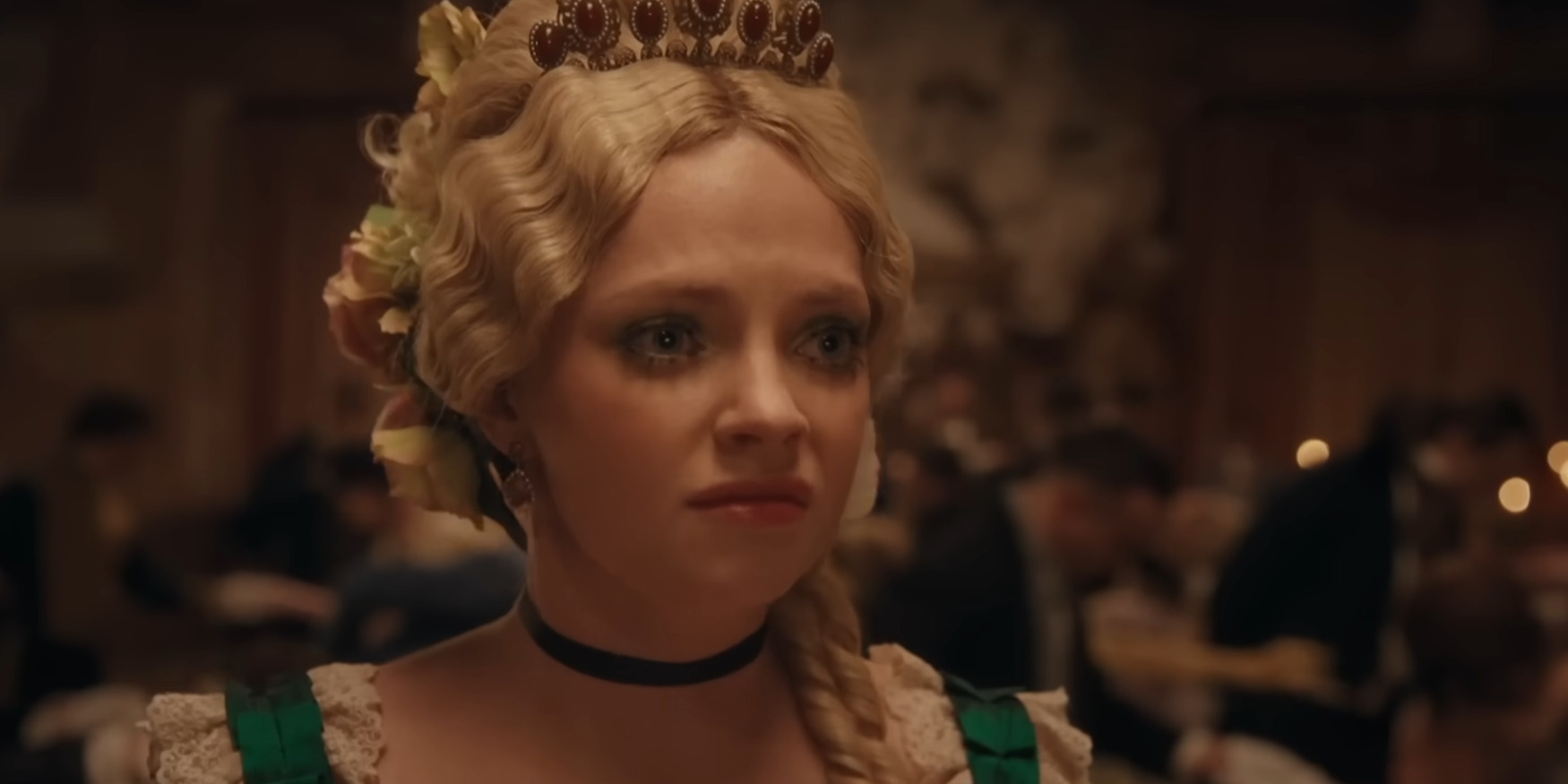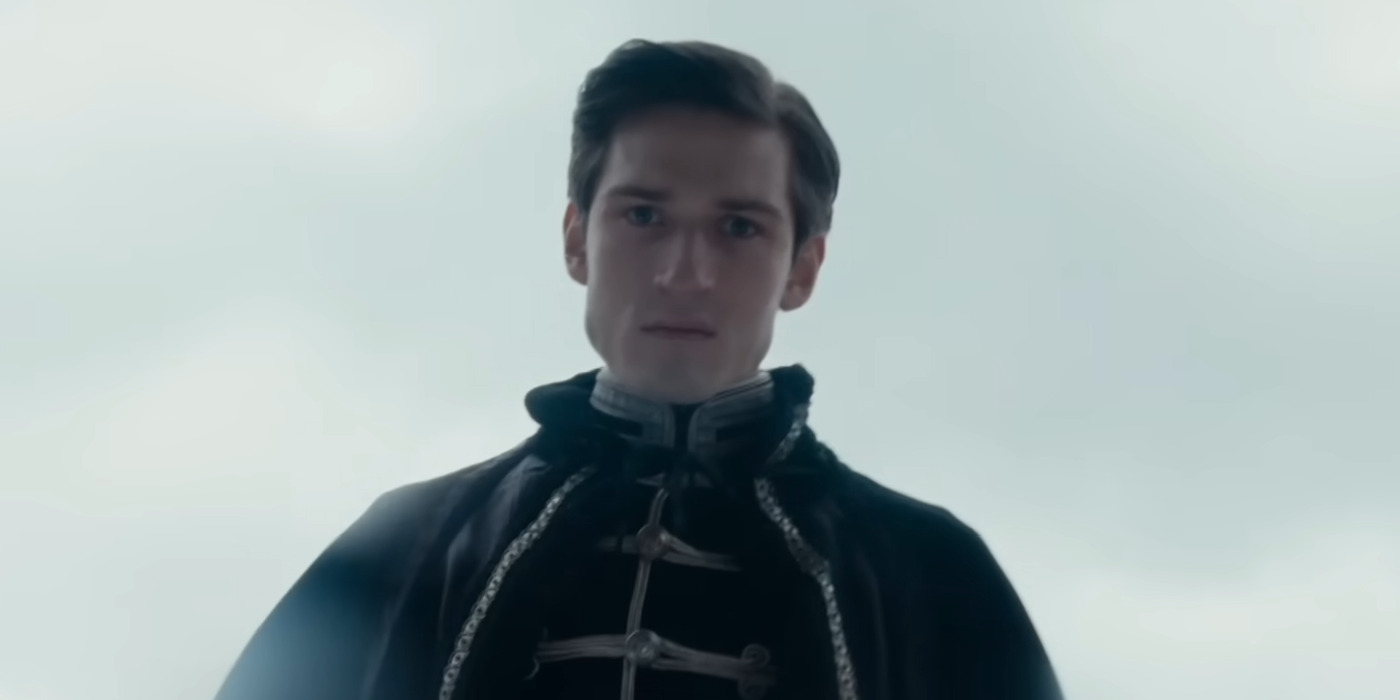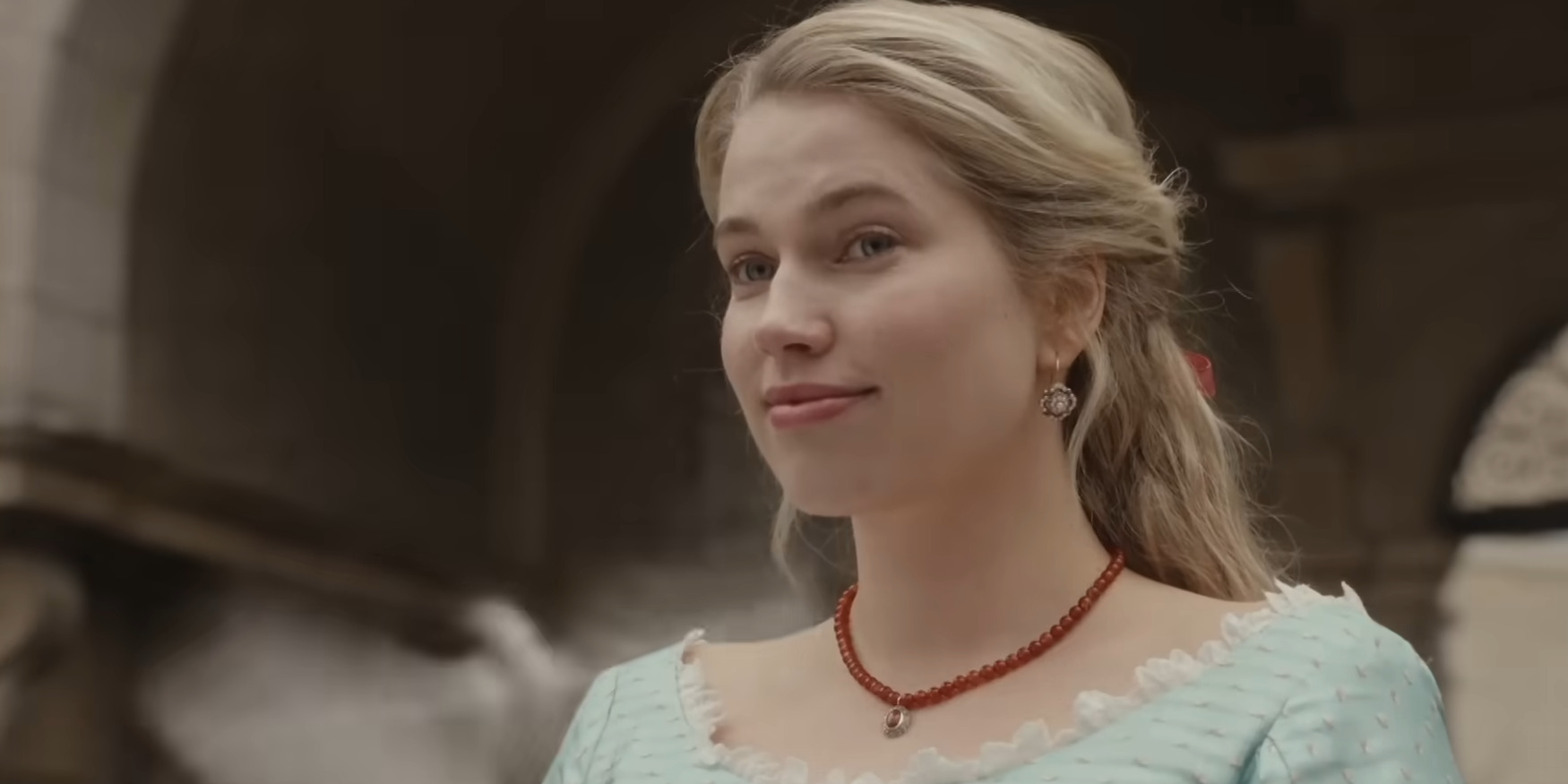Shudder’s Norwegian film ‘The Ugly Stepsister’ (originally titled ‘Den Stygge Stesøsteren’) brings a familiar tale told through a distinct lens. It transports the audience to a Cinderella story unfolding in 19th-century Europe. However, instead of the scorned orphan, Agnes, her competitive stepsister, Elvira, takes the center stage. Shortly after their families conjoin, the latter young woman finds herself entering a perpetual rivalry with her new stepsister, who seems to be eternally gorgeous. As a result, when an illustrious royal ball rolls around, Elvira’s insecurities take hold, compelling her to grow obsessed with the idea of physical perfection.
Thus, it isn’t long before she begins seeking out the same through whatever grotesque means necessary. Under Emilie Blichfeldt’s direction, this story takes a life of its own, subverting expectations while simultaneously charting a realistic storyline about society’s beauty standards and its weaponization against young women. Consequently, the story’s distinct narrative invites an intriguing exploration of its origins.
The Ugly Stepsisters Started Off as a Cryptic Dream
As evidenced through its premise, ‘The Ugly Stepsister’ is a modern retelling of the well-known and well-loved Cinderella fairytale. However, instead of sticking to the status quo and pitching the titular character as the protagonist, Emilie Blichfeldt’s film takes a different route and presents one of the “evil stepsisters” as the central character. The filmmaker got the idea for this project after getting struck with the idea during one of her creative naps. During this process, she saw the central character from her 2018 short film ‘Sara’s Intimate Confession,’ in a recognizable Cinderella costume as she rode away with her Prince. However, halfway through, the character, Sara, realizes that her shoe is actually full of blood because she isn’t Cinderella, but rather one of her stepsisters.

“I woke up and realized, that’s me,” Blichfeldt told The Hollywood Reporter. “I’m the ugly stepsister. Not just because I wear shoes (that are size 11) myself, but because I also long to fit into this idealized form of womanhood. It’s impossible to fit in, but the longing is so big. Because you’re trying to be loved, you know? But there is only one Cinderella. The rest of us are the ugly stepsister, struggling to fit into the shoe.” As such, the idea to base her first feature film around the same topic took hold. Naturally, the cultural phenomenon of Cinderella stories, including perhaps its most famous Disney iteration, had an influence on the filmmaker. For one, her version’s historical 19th-century setting was partially shaped by the animated 1950 film’s costume choices. However, it wasn’t the only inspiration.
The Ugly Stepsister Uses a Classic Fairytale to Tell a Unique Story
Emilie Blichfeldt first read the Brothers Grimm’s 1812 version of Cinderella, ‘Aschenputtel,’ at a young age and sustained a notable inclination to it throughout her life. Particularly, in that version, the stepsisters both cut off their toes and heels to fit into Cinderella’s slippers. This imagery of blood-soaked shoes remains a significant influence over ‘The Ugly Stepsisters,’ informing its central thematic narrative of body horror in connection to beauty.

“It’s (the film’s body/beauty horror elements) inspired by the Brothers Grimm version, of course, and also this idea that beauty is pain,” the filmmaker elaborated in a conversation with Script Magazine. “I wanted to make something that had a fairy tale feel, with the beauty and the dresses and the feminine touch. But then have the horror. I juxtapose beauty and horror.” Consequently, Blichfeldt is able to take an archetypical story and turn it into something with a new, refreshing perspective. More importantly, she does so without changing the basic beats or characterizations of the original fairytale characters.
As a result, the audience is compelled to evaluate an existing story with a different outlook, which adds social relevance to Elvira’s narrative. Yet, the on-screen adaptation still deviates from the Brothers Grimm version when necessary. It takes many of its cues from the general outline of the fairytale while also employing other adaptations as a source of inspiration. As such, Czech films like the 1973 ‘Three Wishes for Cinderella,’ and the 1978 Juraj Herz movie’ Beauty and the Beast,’ also lend some inspiration to the filmmaker’s work in terms of visual and aesthetic themes. Thus, ‘The Ugly Stepsisters’ ultimately remains inspired by the cultural archetype of fairytales as well as specific Cinderella adaptations.
Swedlandia Highlights Problematic Beauty Standards
‘The Ugly Stepsister’ takes place in the fictitious kingdom of Swedlandia. In real life, fans can find different businesses, such as hardware or graphic design firms, and even Twitch Channels of the same name. Nevertheless, there are no real similarly christened kingdoms. As such, Swedlandia remains confined to the film, most likely as a play on the country of Sweden. Even so, while the kingdom remains fictitious, its societal framework and complications appear to be reflective of real life. The origins of Blichfeldt’s work in literature and media remain evident. Yet, it’s the film’s universally relatable aspect that grounds the story in realism.

Despite the minute fantasy elements that lace the narrative, the story at its core revolves around a young woman’s uphill battle with achievable beauty standards. In order to compete with Agnes, Elvira ends up putting herself through various painful cosmetic procedures, such as a nose job, an eyelash extension, and even voluntary tapeworm consumption. While these instances inform the character’s horrifying journey, they also present an eerie parallel to the various real-life practices that shape the modern beauty standard.
As per reports, facial plastic surgery procedures, like Blepharoplasty, Facelifts, Rhinoplasty, and liposuction, were found to be on the rise in 2023. Even though there are various reasons one might get such surgeries, including medical necessities, beauty is certainly a notable part of the conversation. Similarly, the rapid rise of Anti-obesity medications, like Ozempic, to the point where prescriptions are nearly doubling each year, also proposes a similar trend. Therefore, Elvira’s dogged pursuit of the beauty standard remains a relatable plight in the contemporary world. The fact that the fictional character’s employment of these methods also remains period-appropriate, with the 1880s marking the beginning of cosmetic procedures like Rhinoplasty, only further cements the tale in reality.
Read More: The Ugly Stepsister Ending and Post Credits Scene Explained: What Happens to Elvira?


